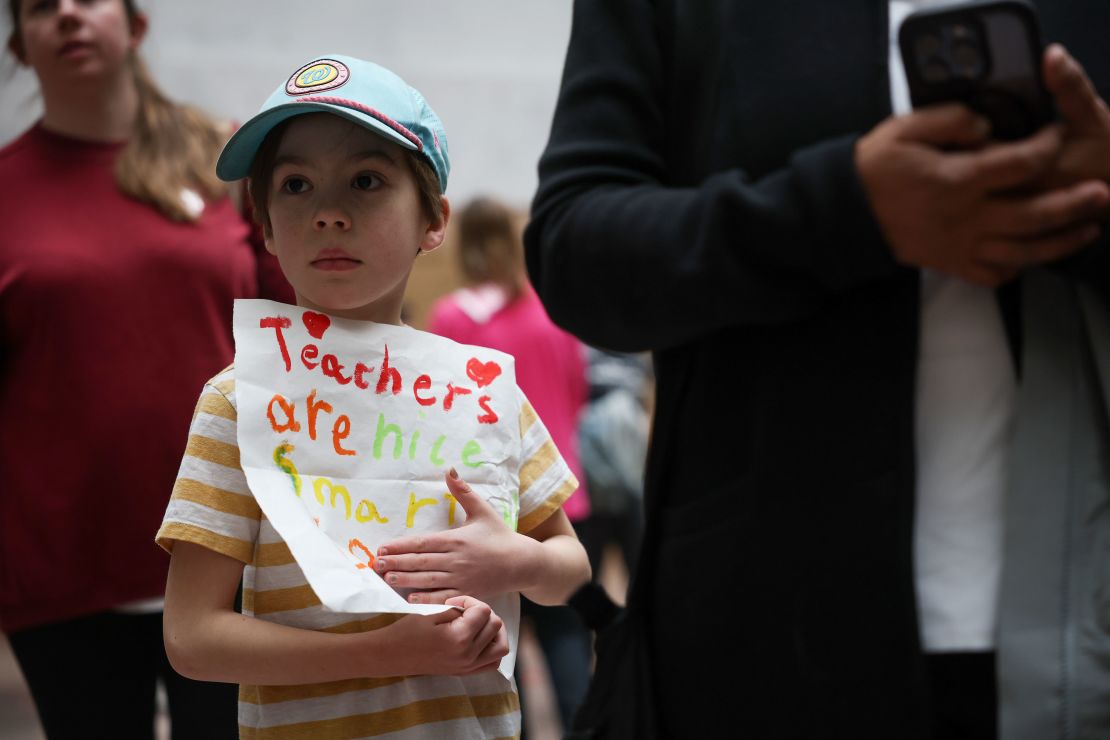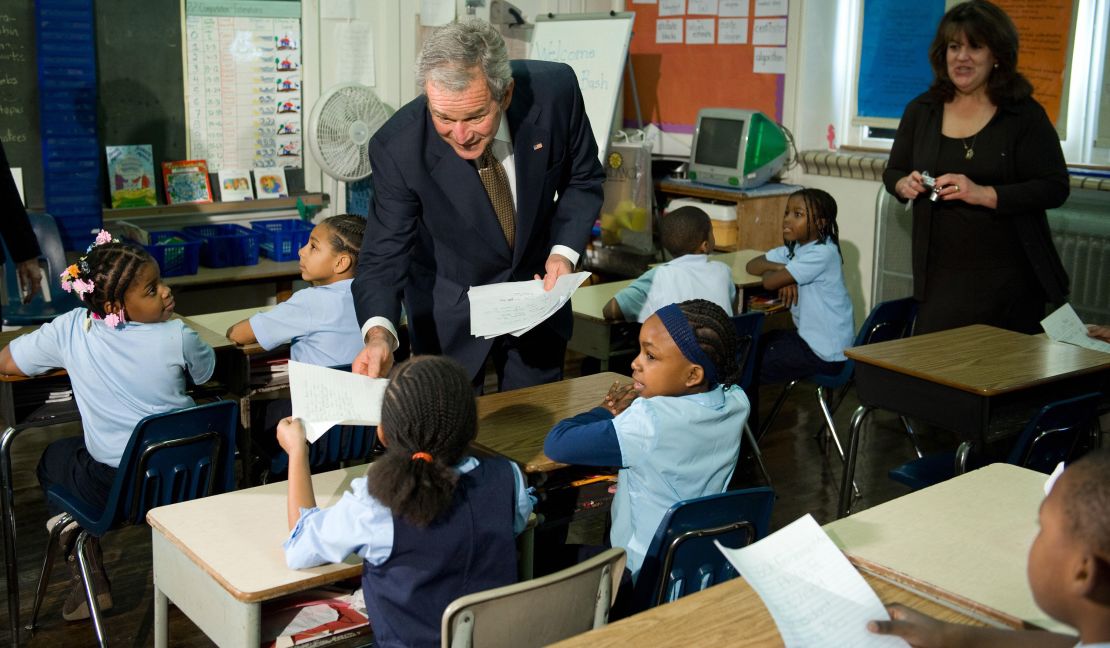A version of this story appeared in CNN’s What Matters newsletter. To get it in your inbox, sign up for free here.
CNN
—
The Supreme Court decision this week giving President Donald Trump the go-ahead to largely dismantle the Department of Education is just one development this summer in what has been a broad federal retreat from education.
► The administration is trying to impound $6.8 billion in funding passed during the Biden administration, which states were expecting to receive starting in July. States have sued to get the money, which is meant to help immigrant students attain English proficiency, fund after-school and summer programs, and support the hiring and retention of teachers in low-income areas.
► The bill that Trump and Republicans eked through Congress makes some important changes to the federal student loan system, making it more difficult to defer payments and cutting down on repayment options.
► It incentivizes private K-12 education in a new way with a novel tax break beginning in 2027 for people who donate to private school scholarship programs, which effectively puts public money toward private schools, something conservatives have long sought.
“Trump’s big changes in education are the federal retreat many conservatives have long called for, with some new attacks added in for good measure,” according to Nat Malkus, deputy director of education policy studies at the American Enterprise Institute. All the actions taken together, he said, could substantially change the federal role in education.
The Trump administration is also getting involved in education with its efforts to pressure states, colleges and universities to drop diversity programs. The Trump administration has also declared war on Harvard and Columbia universities over diversity efforts and allegations of antisemitism. It is also sending a message to other schools and systems, such as the University of California, launching investigations and using federal research dollars as leverage to exert more control.
The US government has been involved in public education since the 1800s, but the Department of Education was not created until the Carter administration. It is the smallest of the Cabinet-level agencies in the US government, but it has a very big job, doling out billions in federal grants and funding that represent about 10% of spending on K-12 education in the US, about $28 billion per year. Most education funding comes from states.
That money is distributed across the country and much of it is meant to focus on children in poverty.
The Education Department also manages the $1.6 trillion federal student loan program, investigates discrimination, and provides research and data on how US students are performing.

What it does not do is determine what US students learn. That’s a job left up to states and school districts, which might come as a surprise to anyone who has heard Trump and other critics.
“We’re going to be returning education very simply back to the states where it belongs,” Trump said in March when he signed the executive order to hollow out the Education Department. It would still presumably take an act of Congress to officially end it.
But the reality is that states control curriculums.
“They’ve created a bogeyman and are claiming that the federal government is making all the decisions about what happens in schools, but that’s not true at all,” Jon Valant, director of the Brown Center on Education Policy at the Brookings Institution, told me.
Some 1,300 employees — about half the Education Department’s workforce — will be fired as of August 1 in what’s called a “reduction in force.” But there are questions about who is being cut and why.
“There’s no rhyme or reason to these layoffs. We do not know why this administration laid off veteran, high-performing employees and kept others,” said Sheria Smith, the president of the union that represents Department of Education employees, said on CNN. Smith is also being laid off from her role as a lawyer in the Office of Civil Rights in Dallas.
The Trump administration has promised the department’s functions will be assigned to other agencies. The Department of Labor could take adult education and family literacy programs. The Small Business Administration might be in charge of student loans, and the Department of Health and Human Services will handle special education services, according to a CNN report.
In addition to effectively dismantling the department, Trump’s 2026 budget proposal would cut federal education funding by 15%.
All this might be happening in the name of efficiency, but Valant wonders whether it would instead move responsibilities to portions of the government less capable of dealing with them.
“I don’t see how any of the actions the federal government is taking in education right now are benefiting students, are promoting improved student outcomes, or are responsive at all to the problems of the day,” Valant said.
Instead of dismantling the department or trying to pressure states and colleges and universities to drop diversity programs, he rattled off a list of arguably more pressing problems, including test scores that still have not recovered from the pandemic; a chronic absenteeism problem; rising concerns around student mental health.
Instead, he said the administration appears to be “just leaning into culture war battles, and I think trying to use schools for political gain.”

Conservatives have been trying to end the Department of Education more or less since it was officially created in 1979.
President Ronald Reagan talked about it during his 1982 State of the Union address.
“We must cut out more nonessential government spending and rout out more waste,”
he said. But he never followed through with dismantling the Education Department.
In 1996, the official Republican party platform included a line on doing just that.
“We will abolish the Department of Education, end federal meddling in our schools, and promote family choice at all levels of learning,” Republicans promised that year.
Republicans have gone back and forth on federal involvement in education in the years since. President George W. Bush worked with Democrats to enact the No Child Left Behind Act, which sought to create new federal learning standards through state-administered testing. It was replaced in 2015.
Trump, by contrast, has repeatedly promised to abolish the Department of Education.
In a blistering dissent to this week’s Supreme Court decision, Justice Sonia Sotomayor, joined by two other liberals on the court, said the majority was essentially letting Trump break the law passed by Congress that created the Education Department.
“It is the Judiciary’s duty to check that lawlessness, not expedite it,” she said.

